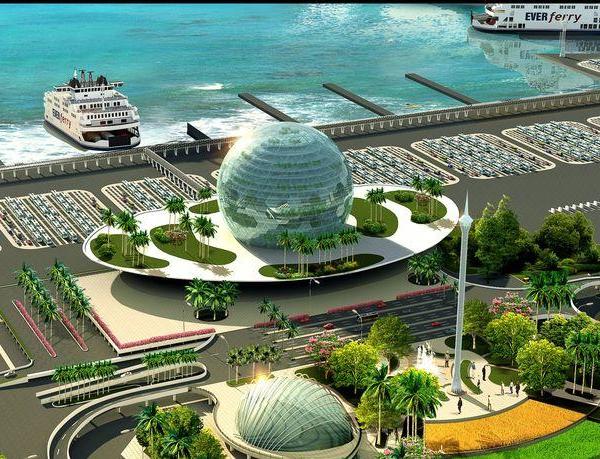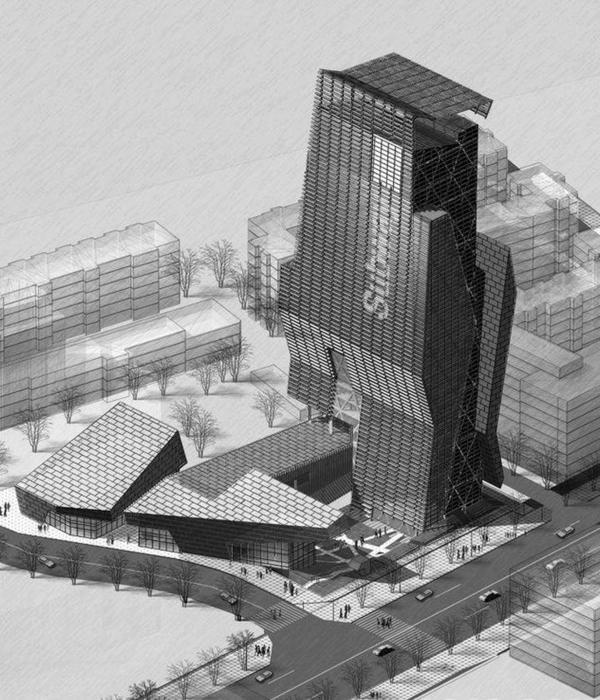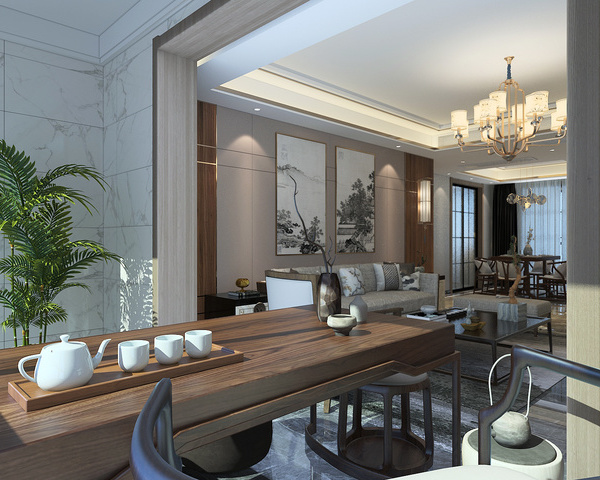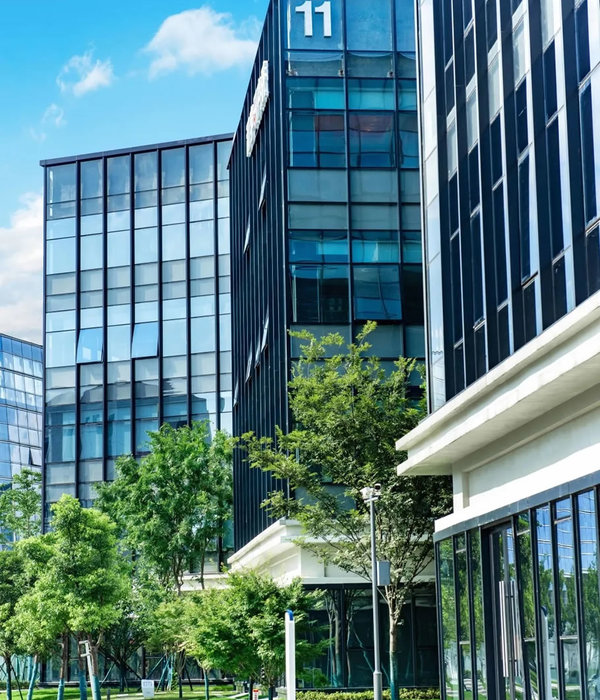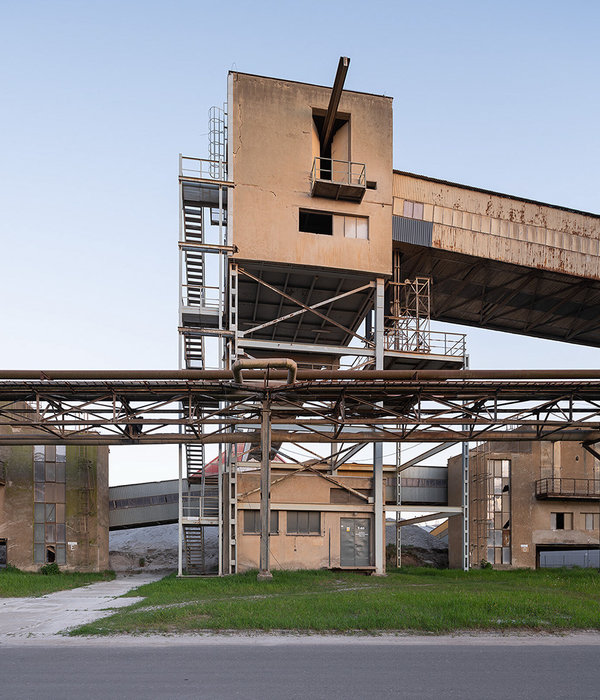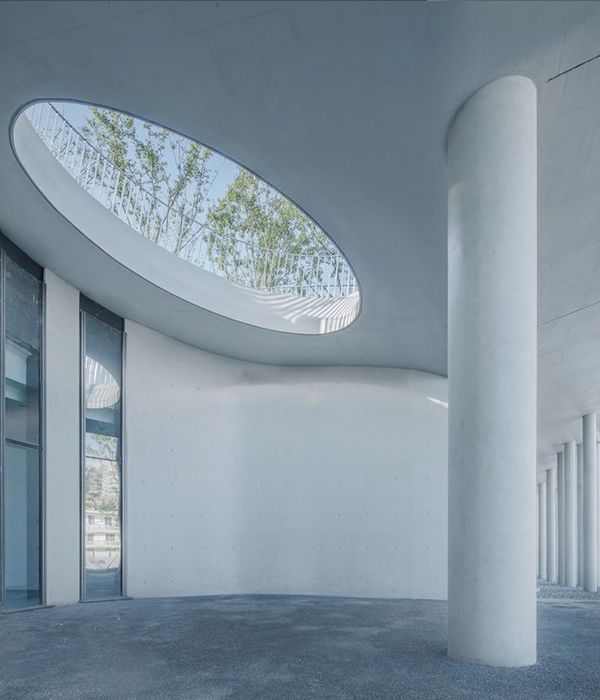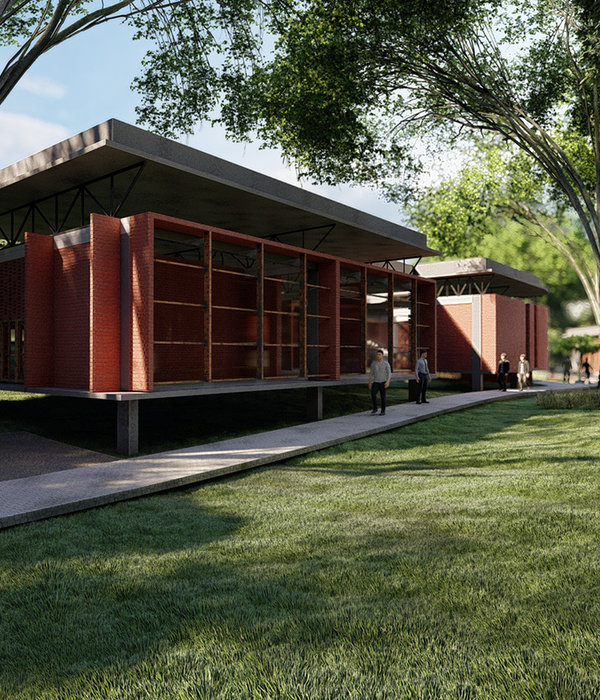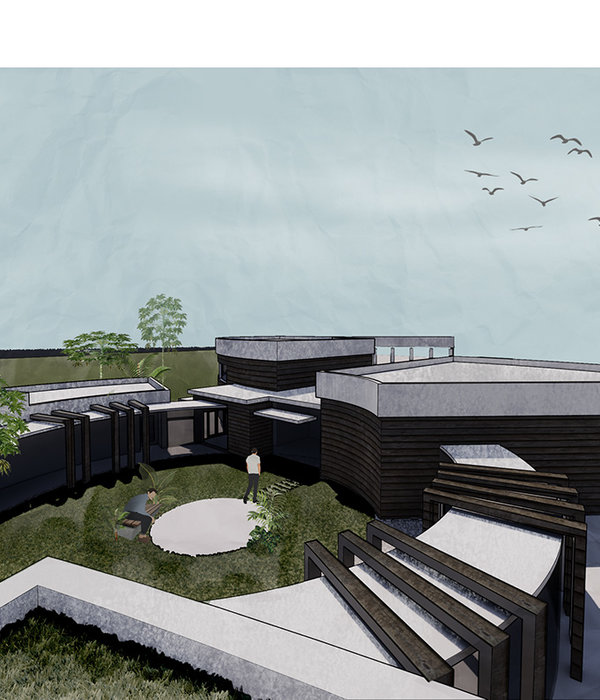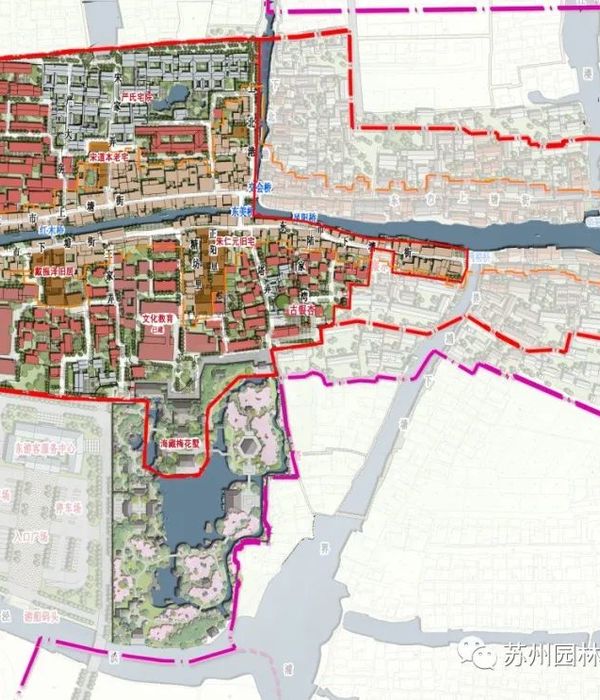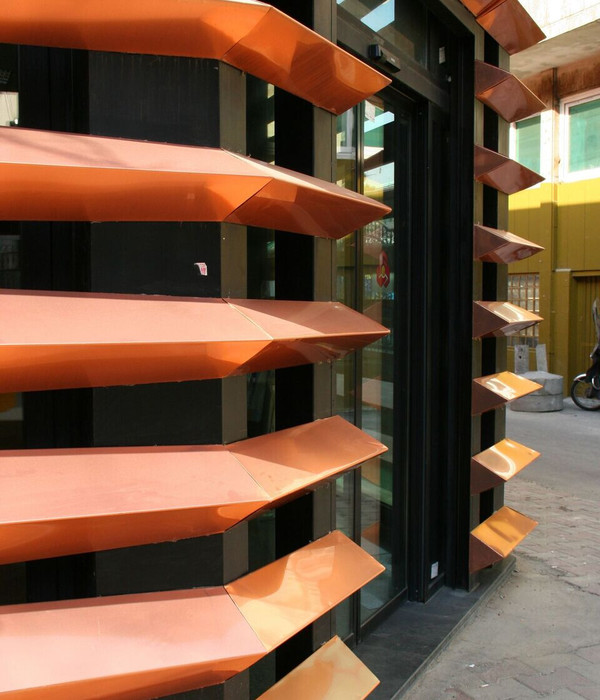▲
更多精品,
关注
“
搜建筑
”
©夏至
©夏至
创意工厂(Idea Factory)是对深圳南投城中村一座旧厂房的改造,它可持续地重新利用和改善厂房,而不是拆除和重建。该项目包含中国万科城市研究院的办公室和出租办公室,但尽管有这一项目,它的显著特点是公共性质的:楼梯穿过六层楼,通向屋顶,屋顶上有一系列“房间”,由活竹子“墙”围成,提供各种设施和活动。
Idea Factory, is a transformation of a former factory building in the Shenzhen urban village of Nantou that sustainably reuses and improves the building instead of demolishing and rebuilding it. The project contains a mixture of offices for the Urban Research Institute of China Vanke and offices for rent – yet despite this program, its distinguishing features are public in nature: a stairway cuts its way through the six-story building, leading to a rooftop with a series of “rooms” enclosed by living bamboo “walls”, offering a variety of amenities and activities.
▲屋顶以竹林为墙,编排出多样的活动空间©夏至
▲相较于拆除和重建,MVRDV从可持续的角度对原有建筑进行改造再利用©夏至
南投是一个历史悠久的古镇,但现在是深圳的一个城中村,与周围的摩天大楼相比相形见绌。创意工厂是万科提出的一系列改造中规模最大的项目,所有改造均由国内外知名建筑师设计,旨在加速南投向文化创意中心的转型。
Nantou has roots as an ancient historic town but is now an urban village of Shenzhen, dwarfed by the skyscrapers that surround it. The Idea Factory is the largest project in a number of renovations proposed by Vanke, all with designs by nationally and internationally renowned architects, which aims to accelerate Nantou’s transformation into a cultural and creative hub.
▲夜里,南头古城中的“if工厂”©夏至
▲设计步骤示意©MVRDV
该设计没有拆除和重建,而是对一座废弃的工厂建筑进行了可持续的翻新,既保留了南投的一段历史,又比新建建筑的碳排放量更低。该建筑的原有结构已经得到了加强,因此可以在顶部增加一层,以最大限度地增加建筑面积。与此同时,原有的门面已被拆除,建筑的混凝土框架暴露并保留下来,以显示建筑历史的痕迹。新的立面从建筑边缘向后倾斜,形成环绕整个建筑的开放式凉廊。这些都有助于交流,并有机会与同事见面,从而创造一个充满活力的创作环境。
Rather than demolish and rebuild, the design sustainably renovates a disused factory building, maintaining a piece of Nantou’s history while also having lower embodied carbon emissions than a new building. The building’s original structure has been strengthened so that an extra floor could be added on top to maximize floor area. Meanwhile, the original façades have been removed, with the building’s concrete frame exposed and preserved to show traces of the building’s history. The new façade is set back from the edge of the structure, creating open loggias that wrap around the whole building. These allow for circulation and enable the chance encounters with colleagues that make for a dynamic creative environment.
▲建筑原有的混凝土结构被暴露出来,新的立面从结构边缘向后退,退让出开放式的走廊©夏至
▲建筑外观©夏至
▲建筑外观©夏至
面对一楼的一个小公共广场,一个突出的管状木质结构标志着通向公共楼梯的入口,公共楼梯贯穿建筑。在里面,楼梯上挂满了镜子,并挂满了明亮的霓虹灯标志,营造出深圳城市化早期的美学提醒。在第四层,这座楼梯从建筑的另一侧伸出——有机会看到周围的屋顶——然后转向并继续向上到达屋顶。
Facing a small public square on the ground floor, a protruding tube-like structure clad in wood marks the entrance to the public staircase that carves its way through the building. Inside, the staircase is clad in mirrors and festooned with bright neon signs, creating an aesthetic reminder of the early days of Shenzhen’s urbanization. On the fourth floor, this staircase protrudes out the other side of the building – a chance to take in a view the surrounding rooftops – before turning and continuing up to the roof.
▲入口连接公共楼梯©夏至
▲楼梯内采用全镜面的材料,装饰着五光十色的霓虹灯,呼应深圳早期的街市风貌©夏至
▲楼梯内采用全镜面的材料,装饰着五光十色的霓虹灯,呼应深圳早期的街市风貌©夏至
离开楼梯后,游客会看到一片绿色的竹子景观,里面充满了各种设施和活动。这是为了形成一个竹子“迷宫”,将屋顶分成不同的房间,每个房间都包含不同的活动:一个用于表演和活动的玻璃盒子、各种休息区、健身房、蹦床、秋千、茶馆、餐厅、舞池和象棋。这个屋顶使该项目在生态和社会方面更具可持续性:竹子创造了一个凉爽、阴凉的空间,并在密集的城市环境中支持生物多样性,而活动室则在历史上处于劣势的社区提供了社交和休闲空间。
Upon exiting the staircase, visitors are greeted with a green bamboo landscape packed with amenities and activities. This is arranged to form a bamboo “maze” that divides the rooftop into different rooms, each containing a different activity: a glass box for performances and events, a variety of seating areas, a gym, a trampoline, swings, a tea house, a dining room, a dance floor, and a chess set. This roof makes the project more sustainable both ecologically and socially: the bamboo creates a cool, shaded space and supports biodiversity within a dense urban environment, while the activity rooms provide social and leisure spaces in a neighborhood that has historically been disadvantaged.
▲屋顶功能示意©MVRDV
▲屋顶鸟瞰©夏至
▲竹子为屋顶的户外空间带来荫庇和凉爽,保护了生物多样性,
同时也为原本相对拥塞的城中村提供了社交和休闲空间©夏至
▲竹子为屋顶的户外空间带来荫庇和凉爽,保护了生物多样性,
同时也为原本相对拥塞的城中村提供了社交和休闲空间©夏至
▲屋顶竹林中穿插设置了分门别类的活动区,容纳不同的活动和内容,形成一个竹墙“迷宫”©夏至
▲屋顶竹林中穿插设置了分门别类的活动区,容纳不同的活动和内容,形成一个竹墙“迷宫”©夏至
▲屋顶竹林中穿插设置了分门别类的活动区,容纳不同的活动和内容,形成一个竹墙“迷宫”©夏至
▲活动空间©夏至
▲活动空间©夏至
▲活动空间©夏至
▲活动空间©夏至
▲项目夜景©夏至
▲一层平面图©MVRDV
▲屋顶平面图©MVRDV
▲立面图©MVRDV
▲剖面图©MVRDV
▼ 更多精品·
点击关注
本资料声明:
1.本文为建筑设计技术分析,仅供欣赏学习。
2.本资料为要约邀请,不视为要约,所有政府、政策信息均来源于官方披露信息,具体以实物、政府主管部门批准文件及买卖双方签订的商品房买卖合同约定为准。如有变化恕不另行通知。
3.因编辑需要,文字和图片无必然联系,仅供读者参考;
推荐一个
专业的地产+建筑平台
每天都有新内容
合作、宣传、投稿
联系
{{item.text_origin}}

